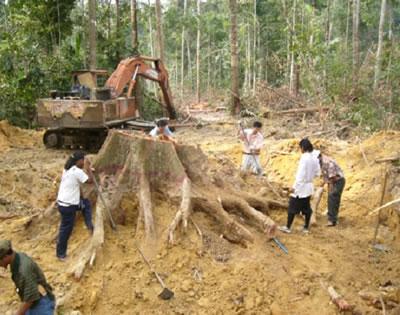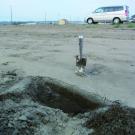Going underground! The hidden half
Roots are called the "hidden half" of plants. Root research lags behind that of the aboveground parts of the plant. In the course of evolution, a great variety of root systems have developed and have overcome various physical, biochemical and biological constraints encountered in the soil. A variety of advanced mechanisms underlie the processes by which roots have adapted to the soil and the complex role of roots by consuming assimilated carbon (C). The assimilated C is translocated to roots where it can be used as building material for structural biomass, for storage, or as a substrate for plant respiration. Despite the fact that roots can consume considerable amounts of the C, we limit our discussion to the quantification of C stores and fluxes of roots for C accounting.

Root system in tropical rain forests
We are digging out big roots and small roots carefully by human power.
I found that tree root is regulated by multiple abiotic and biotic factors, and a better understanding of their impacts is fundamental to predicting responses of roots to global change. Although relationship of root system to individual regulatory drivers has been studied widely, there is still no clear consensus as to those responses under scenarios of multiple changes in global environment. A lack of consensus and inconsistencies among studies are mainly due to variations in the species and age of trees and in soil nutrient status, interaction between roots and mycorrhizae, the timescale of measured responses, artifacts induced by methodologies, and lack of consideration of the confounding influences of other factors not included in experimental designs. Much work is needed for studies considering multi-factor approaches, together with appropriate partitioning techniques and modeling efforts, to disentangle complex responses of root respiration. The highly variable, non-additive and complex responses of root respiration to combinations of regulating factors have constrained our ability to predict feedback effects on the global C cycle.
Many questions related roots still remain unanswered. But it seems likely that new approaches and power to hidden half "roots" will help disentangle the complicated root system in the forest ecosystem. Yes, we need your new idea and power. Let's dig out the hidden half together!






